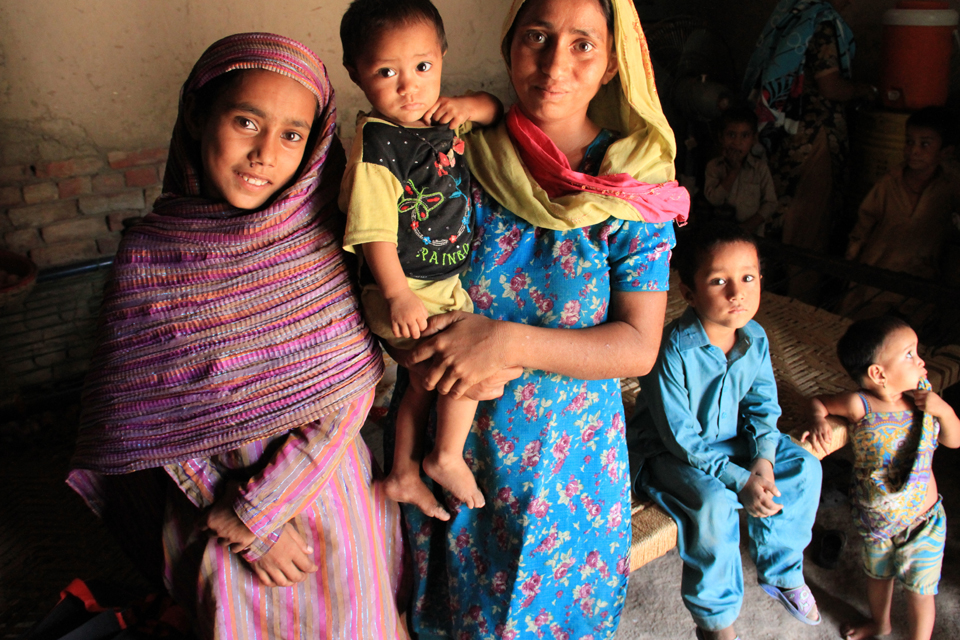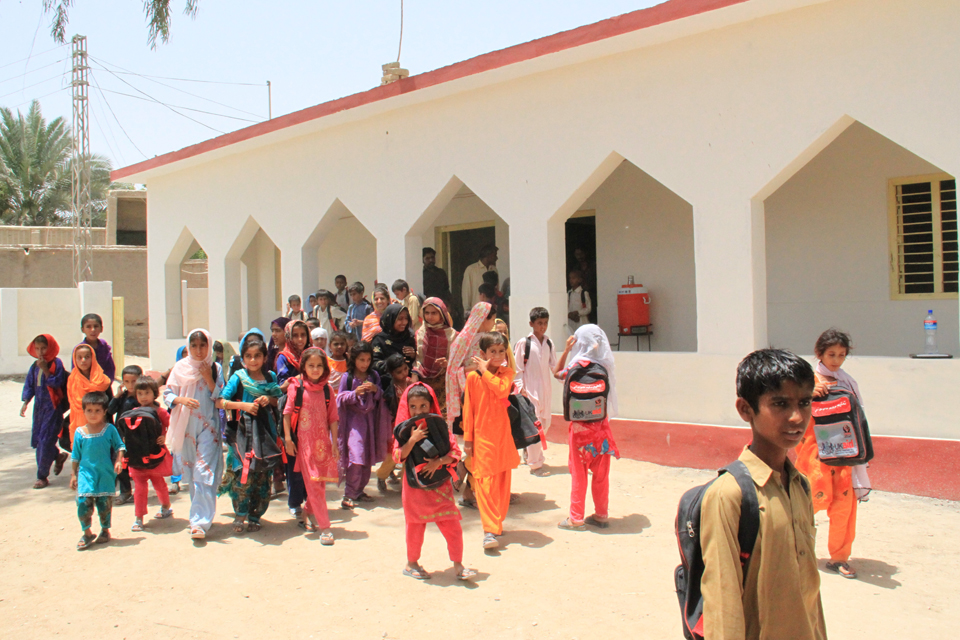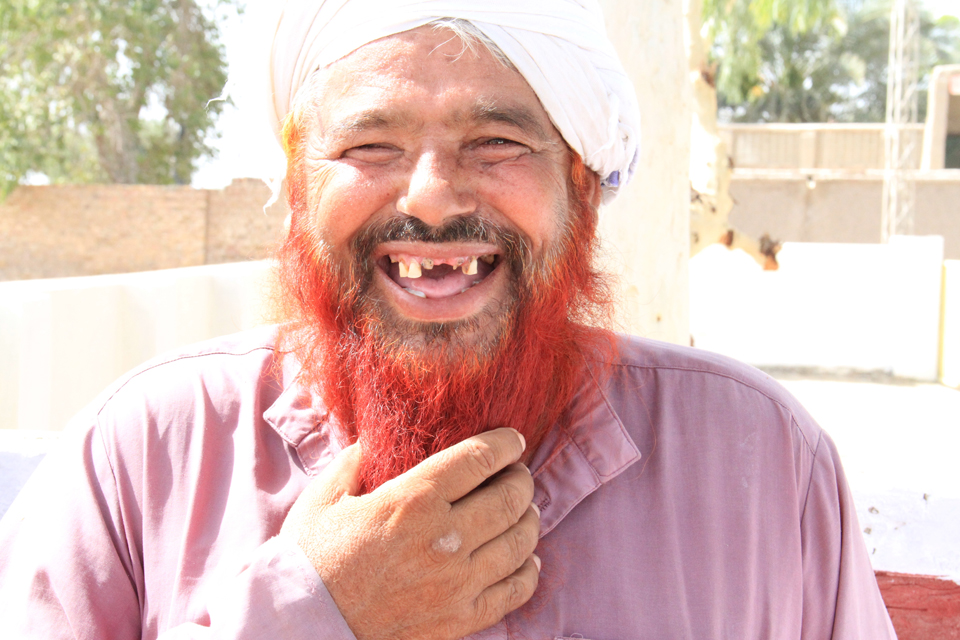Eager to learn - Pakistan floods one year on
UK aid is getting children in Pakistan back to school after the devastation left behind by the floods

Daddla can continue her education thanks to repairs made to her school, funded by UK aid. Picture: Vicki Francis/DFID
Daddla’s story
Daddla Junego, 11 years old, lives in Garhi Haleem village in Sindh, Pakistan, with her mother and 12 other family members in a 1 room house. She goes to the local school, one of many to have been recently repaired thanks to UK aid following last year’s devasting floods.
Temperatures in Garhi Haleem regularly reach up to 52 degree celsius in the summer, cracking the land. Daddla’s school was flooded and then became a camp with up to 50 families living there for several months, causing major damage to the building.
Class struggle
Daddla, holding her new school bag and text books, also funded by UK aid, says:

Daddla with her family. Picture: Vicki Francis/DFID
“We lived in a camp near Sukkur airport for 2 months after the floods. I don’t have a father, he’s dead, so my brother used to get food for us. I won’t ever forget those chaotic days when we lived in the camp. I like very much having drinking water, toilets, and fans at school. Before, we had none of these. It’s very hot here, so we’re very happy to have drinking water and to get education under the fans. My favourite subject is Sindhi and I want to be a teacher when I grow up.”
School’s out
An estimated 5 million school aged children across Pakistan were affected by the floods, with more than 10,000 schools damaged or destroyed by the devastating floods that hit Pakistan last year. Hundreds more were used for months as emergency housing for people who lost their homes in the floods.

Sound structure: Daddla's fellow pupils outside the refurbished school. Picture: Vicki Francis/DFID
Daddla’s school is one of 2,000 schools across the flood affected areas which have been repaired thanks to UK aid.
From camp to campus
“The floods hit here in mid-August. Water was up to about 4 feet. The whole area was covered. It receded from the school quite early and people displaced by the flood water moved in and lived in the school for 3 or 4 months,” says Shiekh Tanveer Ahmed, Chief Executive of the Health and Nutrition Development Society (HANDS), the NGO carrying out the work with UK aid funding.
“Initially we gave them food and water. Then in March, we started work on the school - it was badly damaged with all the furniture and doors broken. With UK aid’s help, we repaired the whole school, installed fans, toilets, and clean drinking water, and provided new furniture, teaching materials, school bags, notebooks, and training for teachers. The children are now continuing their education.”
UK aid has helped to get more than 200,000 children back in to school by repairing or rebuilding more than 2,000 schools across Sindh and Punjab damaged by the floods last year, reinstalling electrics and repairing, cleaning, and repainting the building. UK aid also funded clean drinking water, toilets, exercise books, and furniture for many of the flood hit schools.
A happy grandfather
Ali has 4 grandchildren at Garhi Haleem primary school. He said: “The school is very good now. I’m happy my grandsons and daughters come here. Before, there was no drinking water, no plaster, no gates. I’m happy because it’s much better now, with clean drinking water and a hygienic environment. When the floods hit last August we moved into the camp in this school for 3 months, but we’re back in our home now, although it still doesn’t have a roof.”

Grandfather of four, Ali. Picture: Vicki Francis/DFID
Facts and stats
The UK Government has helped to get over 200,000 children back into school by working with Save the Children, Plan International, and HANDS to repair 2,000 schools across flood affected areas of Pakistan.
An estimated 5 million school aged children across Pakistan were affected by the floods, with more than 10,000 schools damaged or destroyed by the devastating floods that hit Pakistan last year.
Education is a top priority for the UK in Pakistan. With half the adult population illiterate, and only 57% of young children enrolled in primary school before the floods hit, getting as many children as possible back in to education is critical for Pakistan to become the prosperous, stable country it has the potential to be.